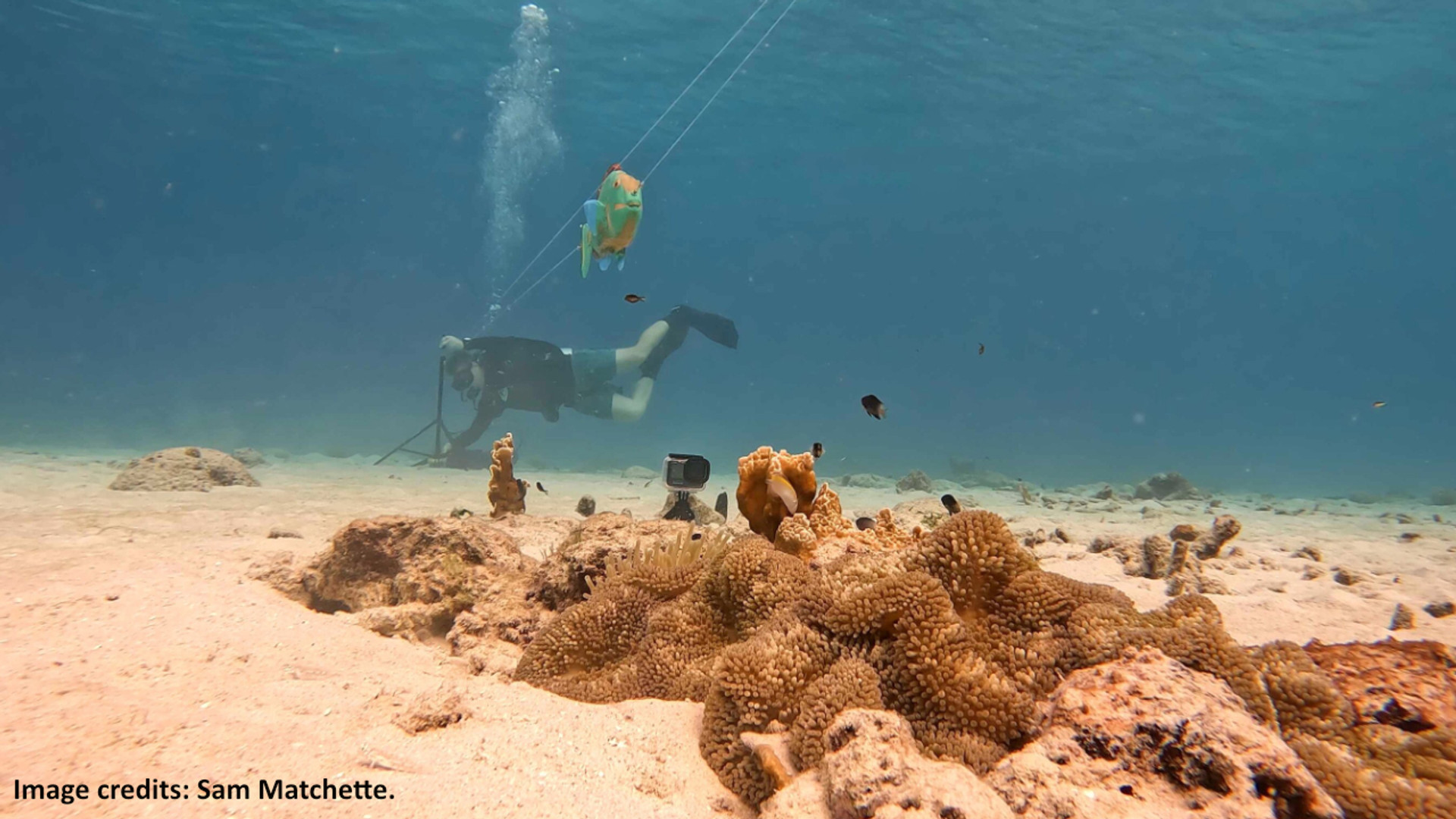The Trumpetfish is a master of disguise: it hides behind other, bigger fish to hunt

Trumpetfish are an unusual and fascinating species that have intrigued us at Quality Marine for many years, now they have gotten even more interesting! Researchers at University of Cambridge’s Department of Zoology performed a study in the Caribbean Sea where they found that Trumpetfish engage in a behavior called “shadowing.”
The trumpetfish possesses a remarkably cunning hunting technique, making it an exceptionally sneaky predator. In an exclusive display of camouflage, the trumpetfish can blend seamlessly with its surroundings by swimming behind larger fish while hunting. This unique behavior reduces the odds of its prey detecting it, leading to more successful hunts. This phenomenon stands as the sole known instance of an animal utilizing another creature as a form of disguise. When the trumpetfish positions itself close to another fish, it remains hidden from its prey's view, or its predatory nature goes unrecognized due to its differing shape.
This groundbreaking discovery offers valuable insights into fish adaptation in the face of climate change. The research process was unconventional, involving innovative methods. Scientists spent hours immersed in the Caribbean Sea, towing hand-painted model fish along wires. This allowed them to uncover the trumpetfish's behavior. It was also observed that the shadowing behavior was more prevalent in degraded coral reef environments.
The researchers meticulously orchestrated underwater scenarios around Curaçao's coral reefs. 3D-printed replicas of trumpetfish on nylon cords were maneuvered through damselfish colonies to document their reactions. When the trumpetfish replica approached alone, damselfish inspected it before retreating to safety. Conversely, when a model of a herbivorous parrotfish was presented alone, the damselfish displayed a milder response. Intriguingly, when the trumpetfish model was attached to the side of the parrotfish, the damselfish failed to detect the threat.
James Herbert-Read, a study author from the University of Cambridge's Department of Zoology, suggests that the trumpetfish's shadowing behavior improves its hunting success and may become more prevalent as natural hiding spots on reefs dwindle. This ingenious and stealthy behavior could hold the key to survival for numerous marine species grappling with the impacts of changing ecosystems. To learn more from Zoe Gordon’s article on ZME Science https://www.zmescience.com/ecology/the-trumpetfish-is-a-master-of-disguise-it-hides-behind-other-bigger-fish-to-hunt/